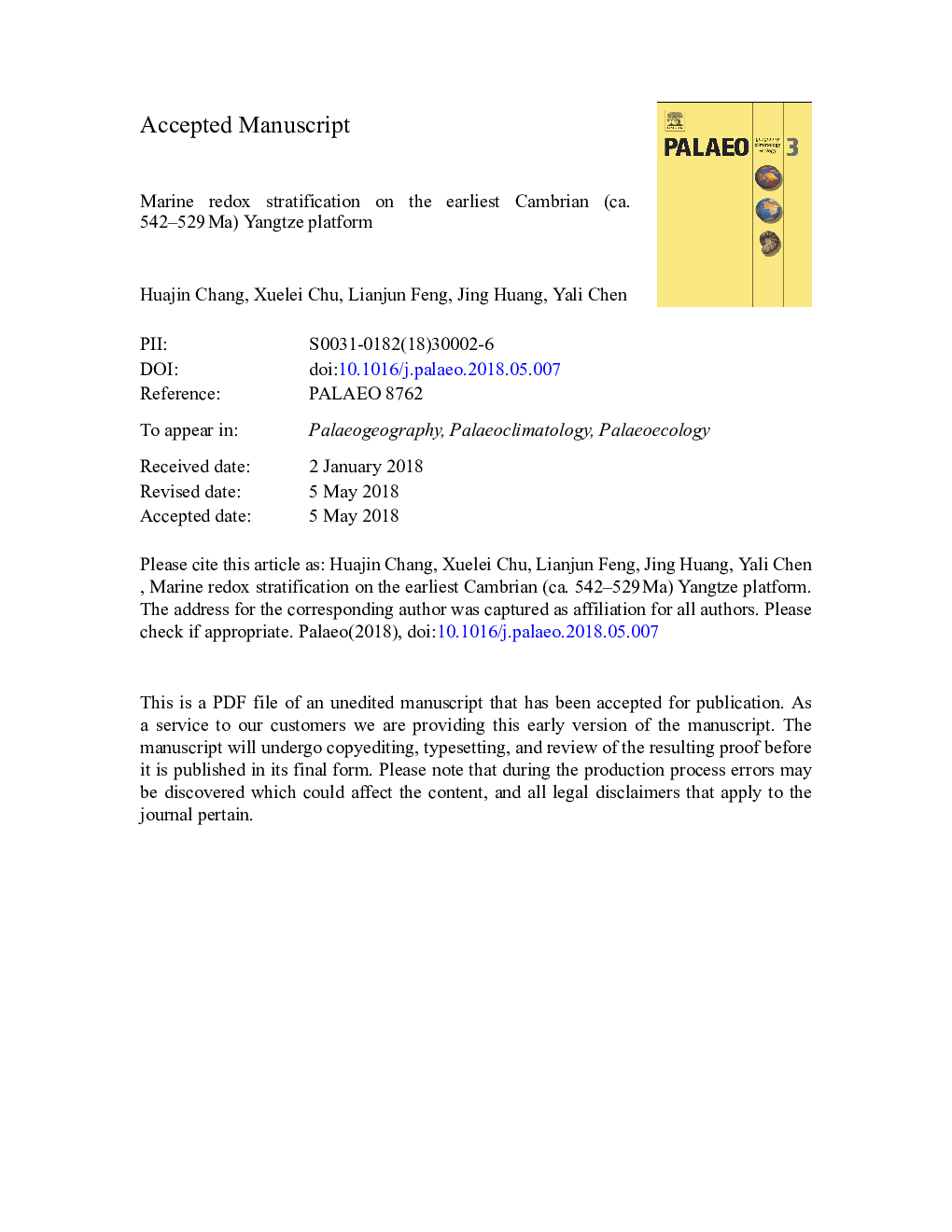| Article ID | Journal | Published Year | Pages | File Type |
|---|---|---|---|---|
| 8868141 | Palaeogeography, Palaeoclimatology, Palaeoecology | 2018 | 53 Pages |
Abstract
In order to explore the marine redox structure on the earliest Cambrian (ca. 542-529â¯Ma) Yangtze Platform, South China, new Fe-Mo-C-S geochemical data from the slope Xugongping section for the Liuchapo and the base of Niutitang Formation are reported here. Integrated Fe speciation and Mo abundance data from the Xugongping section, in combination with previously published data from slope-basinal Longbizui section and others, suggest oxic surface waters and ferruginous deep waters coexisting with occasional mid-depth euxinic waters during the Fortunian Stage, and with widespread euxinic waters during the early Stage 2 marine transgression. A compilation of new and published sulfur isotope data of pyrite for the Liuchapo and the base of Niutitang Formations presents high isotopic values (mostly >+10â°) and distinctly different spatiotemporal gradient characteristics during the Fortunian Stage and the beginning of the Stage 2. We propose that redox stratification developed in the earliest Cambrian protected basin, and eustatic change and the connectivity of the protected basin with the open ocean controlled the materials supply from riverine input and open ocean reservoir and thus spatiotemporal variability of ocean chemistry.
Related Topics
Physical Sciences and Engineering
Earth and Planetary Sciences
Earth-Surface Processes
Authors
Huajin Chang, Xuelei Chu, Lianjun Feng, Jing Huang, Yali Chen,
